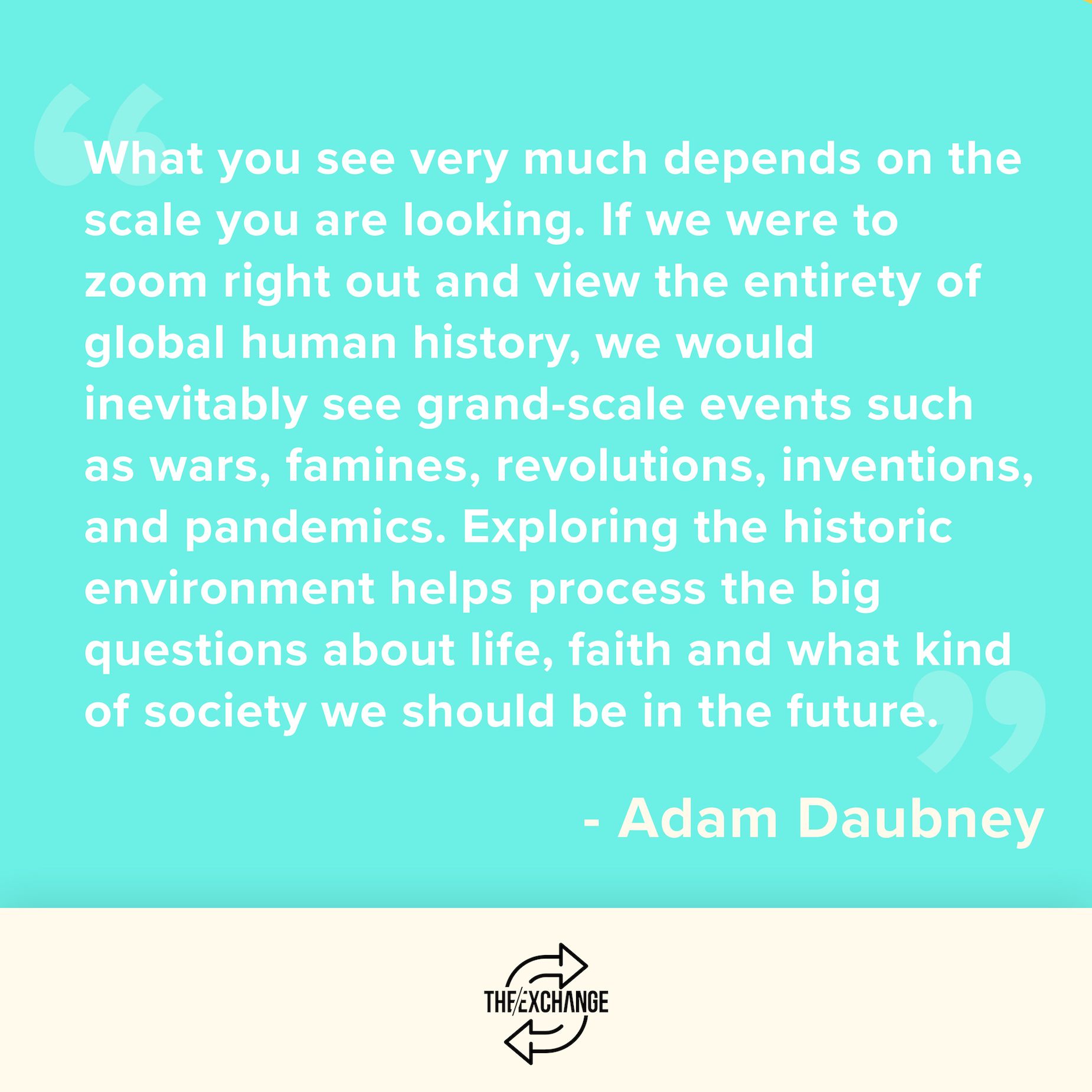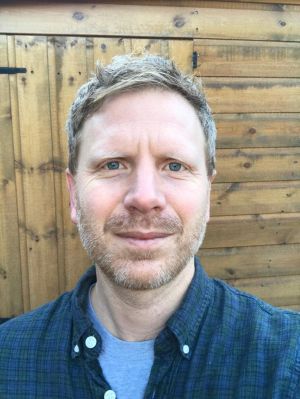

Adam Daubney
Archaeologist
13
Apr 2021
The past in perspective: resetting through heritage
One of the basic principals of archaeology is that ‘what you see very much depends on the scale you are looking’. If we were to zoom right out and view the entirety of global human history, we would inevitably see grand-scale events such as wars, famines, revolutions, inventions, and pandemics. These events would help us to see, on a very broad-level, how and why societies ebbed and flowed over time. However, we would lose some understanding of how individuals and groups can change history.
Similarly, if we zoomed right in – for example, to examine the last 50 years of your village or town – we would see much finer detail. At this scale we would see the effects of individual actions, groups, and localised events, but we would lose some understanding of how and why your village or town appears as it does today.
Take, for example, the humble ‘green lane’. The countryside is criss-crossed with many public footpaths today, many of which are deeply rooted in the past. Some stretch back into prehistory. These pathways may seem insignificant, but they are examples of the sorts of things that have quietly directed how the landscape has been used over many generations.
What we see very much depends on the scale we are looking.
For many of us, our worlds have become rather small during the pandemic. Covid has forced us to close our doors, keep our distance, and focus our physical relationships on those we are bubbled with. Similarly, daily coronavirus updates on the news have subconsciously trained us to think on short scales of time. We measure life in terms of vaccine rollouts, lockdowns and the easing of restrictions while forgetting the grander narratives of time. All of this is deeply disorientating.
For many of us, our wellbeing is strongly linked to our sense of place. By ‘place’ we mean the village, town, or city where you identify with most. Research has shown that a strong sense of place gives people a stronger sense continuity, a greater sense of connectedness, a greater sense of purpose, and provides an environment in which people can fulfil their goals. Naturally, heritage is a huge part of this. Historic buildings, museums, art galleries, archaeology societies, historic landmarks, streetscapes, monuments and so on are all powerful components of people’s sense of place.
For those of us working or volunteering in the heritage profession the months and years that lie ahead offer great opportunities to serve our communities. Archaeology projects can help gather individuals, families, and communities disconnected by the virus; museums can help people regain a sense of perspective and temporal orientation; Cathedrals, churches, sites, and monuments can provide places for reflection, inspiration, and enjoyment.
In the previous GLX blog post, educationalist Paul Tinsley noted that people are questioning where God is, and the place of the Church in the midst of all this. Paul also commented that when we come out the other side of the pandemic, we will be much more aware of our fragility as human beings. “Many will be asking big questions about life, faith and what kind of society we should be in the future.”
For some, the historic environment will help people to process these questions, regardless of whether that process is sought out intentionally, or is just the by-product of enjoying visiting a heritage site. Museums and heritage sites help us to reflect on the fragility and brevity of life and our ‘moment’ in the grander narrative of time. Likewise, historic places of worship help us to understand how faith has helped previous societies in times of crisis. And yet, the redundancy of many historic places of worship today demonstrate that the church is on the move. Empty historic churches do not signal that Christianity is dead, but rather that it now also expresses itself through a flotilla of house churches, café meet-ups, and non-ecclesiastical buildings that leave very few footprints beyond those which are left by serving the communities they live in. Today’s church is thankfully unlikely to leave much for archaeologists to dig up in the future, mainly because it is throwing off its former structures and rising to the challenge set by the early church in the book of Acts. In many ways these new expressions of faith stretch back beyond the medieval Cathedrals that dominated the landscape, and into the artisanal Celtic communities of the Early Medieval period where grass-roots Christianity permeated learning, craft, family life, commerce, and play.
Times are changing (as they do by their very definition!), but heritage will undoubtedly help us to rebuild our societies and learn from the past. For those Christians working or volunteering in the heritage profession, this will involve helping all of us (ourselves included) to regain a sense of place. For some this will improve their overall wellbeing; for others it will mark the start of a journey in faith.
- © 2018 Ground Level Ministry Team Ltd
- Ground Level Network is a trading style of Ground Level Ministry Team Ltd.
-
Registered Address: 22 Newland, Lincoln LN1 1XD
- Company Number: 02425628
- Registered Charity Number: 1001599
- Website by WebWorks Design
-
Ground Level
22 Newland
Lincoln, LN1 1XD -
This email address is being protected from spambots. You need JavaScript enabled to view it.